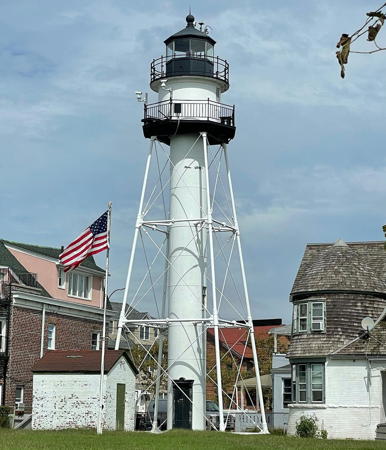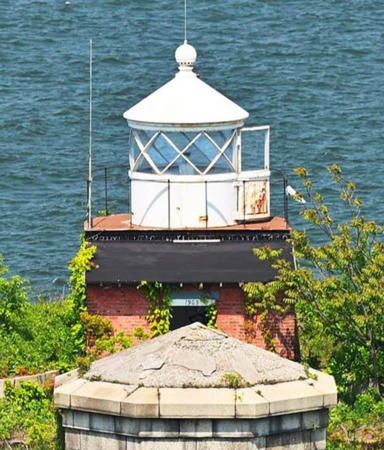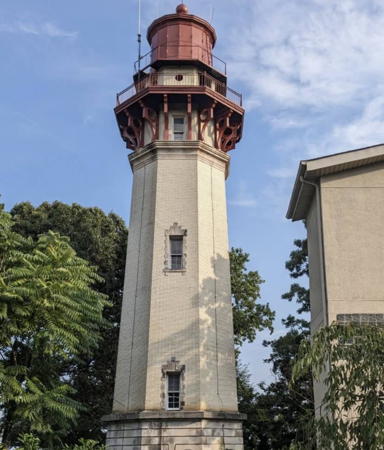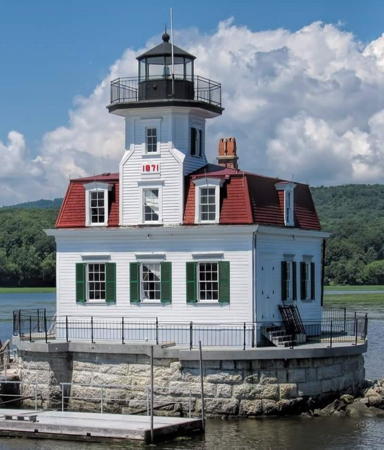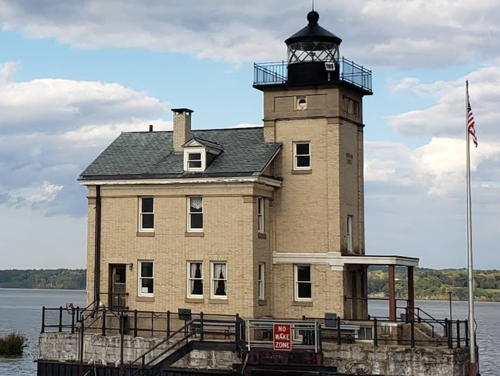The United States of America is a federal union of 50 states and a capital district. The northeastern state of New York includes in the southeast the great port and financial center of New York City and Long Island extending to the east of the city; in the west and north it extends to Lakes Erie and Ontario and the lower St. Lawrence River.
Rich in waterways, New York is equally rich in lighthouses. This page lists lighthouses and lightships of New York City and the Hudson River in the southeastern corner of the state. There are additional pages for Western New York, for Central and Northern New York, and for Long Island.
In New York Harbor the Robbins Reef, Great Beds, and Romer Shoal lights are often considered New York lighthouses but they are actually in New Jersey waters.
Navigational aids in lower New York State are operated by the U.S. Coast Guard Sector New York with Aids to Navigation Teams based at Bayonne, New Jersey, and at Saugerties on the Hudson River. However ownership (and sometimes operation) of historic lighthouses has been transferred to local authorities and preservation organizations in many cases.
ARLHS numbers are from the ARLHS World List of Lights. Admiralty numbers are from volume J of the Admiralty List of Lights & Fog Signals. USCG numbers are from Volume I of the USCG Light List.
- General Sources
- New York Lighthouses
- Photos, travel directions, and historical accounts by Kraig Anderson.
- New York Lighthouses
- A portfolio of photos by Jeremy D'Entremont.
- New York Lighthouses
- Photos by C.W. Bash.
- Online List of Lights - New York - Bay and Harbor
- Photos by various photographers posted by Alexander Trabas.
- Lighthouses in New York (state)
- Photos by various photographers available from Wikimedia.
- New York, United States Lighthouses
- Aerial photos posted by Marinas.com.
- National Lighthouse Museum
- The museum occupies a building of the former Lighthouse Depot on Staten Island.
- Leuchttürme USA auf historischen Postkarten
- Historic postcard images of U.S. lighthouses posted by Klaus Huelse.
- U.S. Coast Guard Navigation Center: Light Lists
- The USCG Light List can be downloaded in pdf format.
- NOAA Nautical Charts
- Nautical charts for the coast can be viewed online.
- Google Maps
- Satellite view of the Greater New York region.
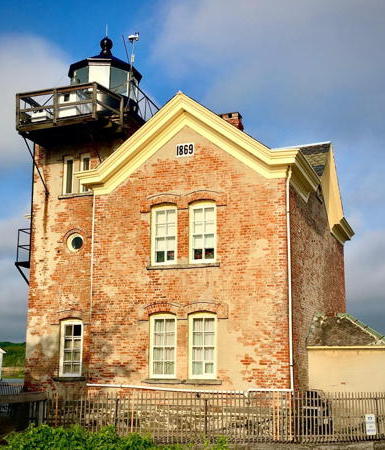
Saugerties Light, Saugerties, June 2022
Instagram photo
by Saugerties Lighthouse
